In the vast and complex realm of music production, the seemingly minute yet profound element known as the ‘click track’ holds importance that can’t be underestimated. With its history deeply rooted in the annals of sound engineering, the click track has evolved to become an indispensable tool for musicians and producers alike, crafting detailed audio tapestries with rhythmic precision. This essay aims to unpack the intricacies and quirks of click tracks, from its integral role in shaping the quality of a musical piece to the technological advancements that have honed its relevance in recent times. Laced within are insightful case studies where the timeless tunes in our playlists have danced to the rhythm of the click track, making music what it is today- an aural delight.
Understanding the Click Track
Stepping into a heartbeat, measuring the pace of pulsations; that’s what beginning a music piece feels like. The rhythm sways, setting a rhythmic vista, radiating uniformity and consistency so crucial to a track’s soul. This founder of rhythm, the lodestar guiding the melodic ship, is none other than the humble, oft-unsung hero: the click track.
At first blush, the click track might seem like a mere rhythmic metronome. But it’s more than that. It’s an invisible member of the band; an unassuming shepherd leading the musical flock to coherence. The unsung conductor weaving a symphony of tunes, the click track carves out a vital role in the recording process.
To dissect the world within a click track, one needs to embrace its mechanism. It’s not a frivolous noise in the background. It emanates a series of audio cues, offering the ever-so-required synchronization and timing for all engaged in the performance. As simple as it may seem, the click track is the melodious storyteller, narrating each note’s when and where, hiding behind the curtain while the show goes on, the quiet lighthouse guiding the ship to safe harbor.
Digging deeper into the intertwining threads of a click track’s role, its significance cannot be understated during multiple takes or multitracking in a recording session. When layers of various harmonies and instruments are stacked, synchronization is paramount. And who’s the maestro pulling all strings together? The click track, shrouding everyone under its rhythmic umbrella, ensuring that the plethora of tones dance together in harmony, not stepping on each other’s toes.
Remember, that sound engineers, those magicians in the studio, rely heavily on click tracks. It makes their work smoother, with the decibel timing being the thread between tracks. The tempo mapping becomes seamless, and punching in and out of the live recording avoids any disturbance in the musical continuum. The music weaves in and out effortlessly, guided by the invisible thread of the click track.
Moreover, in our age of unstoppable technology, the click track juggles an assortment of roles. From cueing synths, controlling light shows incorporating pyrotechnics, to even aligning the stage smoke, the enthralling spectacle of a live show is orchestrated in part by the click track. A steady rhythm not only ties together the intricate tapestry of sound but synchronizes an impactful visual experience.
Much to the bewilderment of many, the click track works in mysterious ways. It lives in the shadows, the cognitive phantom guiding the symphony; invisible, yet influential. It’s the silent clock tick-tocking in the vast auditorium of melody, marking the pace of every note and chorus. A pedestrian listener might not realize its existence but peel back the layers, and you find the click track, standing tall and crucial in the world of musical magicians.
The true power of the click track lies not in its sound, but in its silence, its skill of operating subtly. It is the unseen melody, the uncredited rhythm, laying out the canvas for the music to play with splashes of vocal tones and instrumental colors.
So the next time you get lost in the mesmerizing labyrinth of music, remember to appreciate the invisible maestro, the click track, whose silent whispers breathe life, rhythm, and synchronicity into every note that reaches your ears.
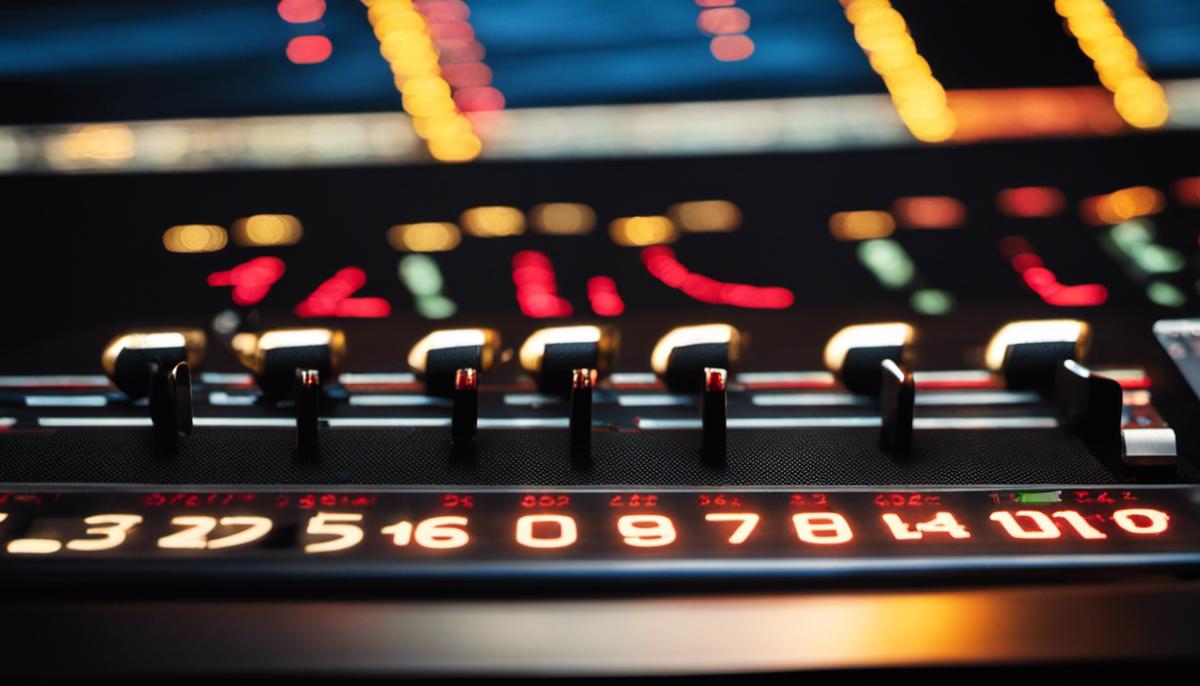
The Relationship Between Timing and Musical Quality
“Accurate Timing: The Pulse Behind Artistry and Resonance in Music”
A symphony of sublime acoustics or a riotous rock concert – what is the omitted denominator that harmonizes each note into a sensational melody? With the omnipotent but behind-the-scenes pulse of a metronome or click track, the real maestro, having already been examined, let us delve deeper to comprehend how precise timing modulates the overall allure and quality of a musical masterpiece.
Every pulsating beat in a musical composition is analogous to the rhythm of a heart. As intricate as lacework, this heartbeat crafts an enthralling cadence that manages to whisper to the soul, command a foot to tap, or coax tears from a listener’s eyes. With the same austerity as the nation’s constitution, the integrity of a piece stands on the important tenet of accurate timing.
Elaborated as the milliseconds that separate amateur from virtuoso, precise timing is the defining factor that moulds an auditory experience. Picture a snare drum smacking its sharp, crisp note a millisecond too soon or too late. It skews the very skeleton on which a piece of music stands, compromising melody and rhythm, that ultimately leads to a discordant audio experience. Visualize accurate timing as orchestrating notes along the timeline of a track, a conductor coordinating the dance between melody and rhythm, dictating the rise and fall of a symphony, or blending the pitch-perfect vocals cruising above guitar shredding.
To understand the magic imbued in precision further, let’s venture into the realm of jazz and reggae, where timing fluctuates as per artistic interpretation. The unique syncopation of ‘offbeat’ notes lends these genres their characteristic charm. This flexible timing, or “swing time,” permits musicians to articulate emotion, inducing a creativity-sparking variance. Thus, accurate timing in this context is not just confined to mechanical precision, but also involves a dynamically nuanced comprehension of rhythm that entrusts the performers with regulating timing to enhance their expressive potential.
Diving into the hemisphere of the audience, accurate timing also shapes how music is perceived. Have you ever noticed your foot automatically tapping in response to a catchy tune? This phenomenon, referred to as ‘entrainment,’ stems from the accurate timing embedded in the music. Humans have a natural propensity to synchronize movements with a rhythm pattern. When beats are punctually delivered, it allows listeners to carve a physical and emotional connection with the music- swaying, dancing, or simply absorbing the synergy spun around them.
Certainly, while on the journey of constructing a musical piece, unleashed creativity and fervent composition are crucial. Nonetheless, these elements resonate potently only when they synergize with the carte blanche bestowed by accurate timing. As a true testimony to the chi of music, accurate timing gifts musical pieces their pulse- a life force that resonates within the listener and arouses the gamut of human emotions within their soul.
Ultimately, the beat whispers its silent mantra, ‘timing is everything.’ Its pulse embedded within the symphony of notes and silences, accurate timing, fuels the heart of music, knitting together the essence of raw passion and refined artistry, producing a tapestry that is by every means- a masterpiece.
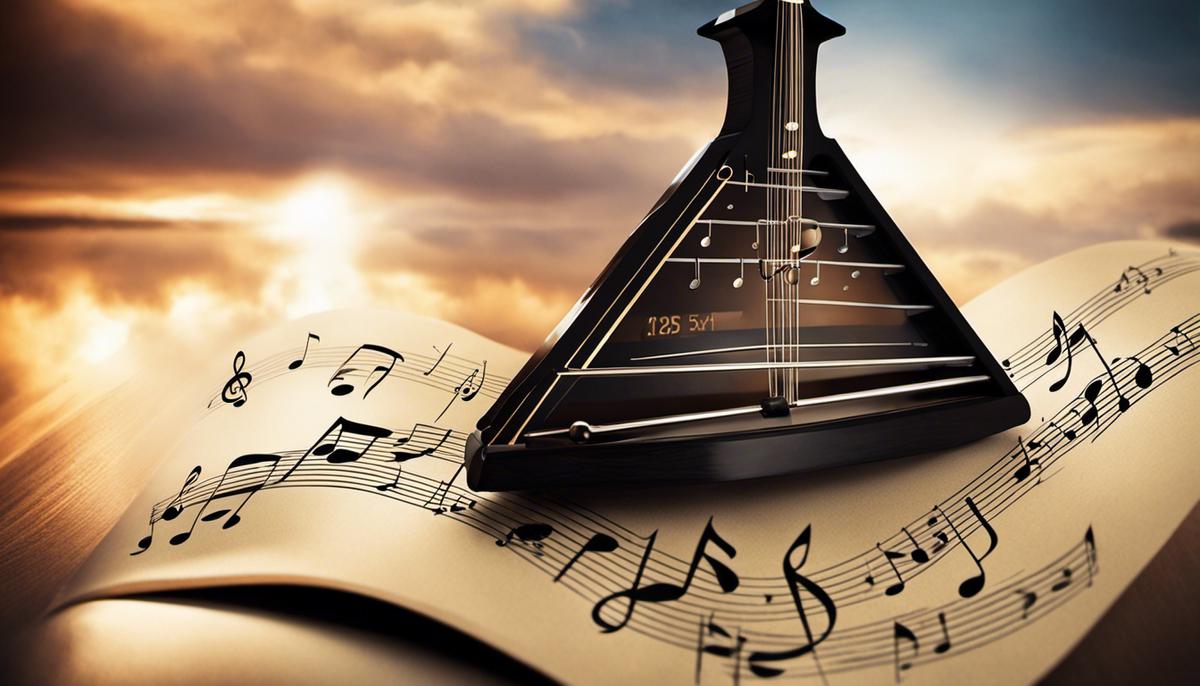
Advanced Click Track Techniques
Foraying into the deeper echelons of music production and performance, the click track emerges as the beating heart, a digital maestro, driving musicians towards luminary heights of virtuosity. Let’s delve into advanced strategies artists and producers use with click tracks to encode melodies with life, rhythm, and soul.
While the click track’s fundamental purpose is providing synchronization and tempo, advanced musicians are harnessing this tool in innovative ways that extend beyond just basic timing. One such strategy is layering of click tracks. By using multiple click tracks simultaneously, musicians can construct rhythmic textures that epitomize complexity and ebb with layered nuances. This technique is incredibly empowering for granting total control over the tonal structure, thus enabling rhythmic creativity to flourish unrestrained.
Another sophisticated maneuver with click tracks involves flexible tempo mapping. It is a technique where the tempo is intentionally varied over the course of a song to evoke an array of emotional responses—an elusive effect when sticking with a single metronome setting. The variation in tempo provides a semblance of the human touch within the calculated precision of the digital milieu, fostering a more organic musical experience.
Complementing the flexible tempo mapping, the use of accelerando and ritardando—gradually speeding up and slowing down the tempo—within the click track is another advanced strategy. These subtle tempo changes can drive a change in both the emotional contour and the narrative curve of a song, immaculately aligning the pace and intensity of the music with the lyrical subplot.
Augmentation of the click track with auditory cues is another game changer. Adding in auditory cues, such as strikes or chimes, to signify transitions, such as verse-to-chorus shifts, further enhances the correspondence between musicians during live performances and recording sessions. This cueing system arms musicians with the perceptual tools necessary for crafting the musical masterpiece where each nuance is attuned to the overarching rhythm and melody.
In the realm of electronic music, producers have begun automating parameters within the click track, regulating factors like reverb, pan, and filtering. Thereby not only creating intricate rhythmic patterns but also exploiting the sonic space, thus moulding the soundscape dynamically in compliance with the music’s emotional undertow.
The culmination of these advanced strategies infuses the creations of musicians and producers with an unmatched temporal control and ravishing rhythmic resonance. The click track, therefore, carves its niche as not just an invisible metronome, but a tool for injecting depth, dimension, and dynamism into the music. Indeed, the true power of the click track lies in its adept ability to unshackle the chain of rigid timing, unfurling a world where each pulse, each beat, each rhythm is a conduit to explore the boundless canvas of musical creativity.

Impact of Technology on Click Track Usage
As we pull back the curtain on the musical universe, the click track stands there – its rhythmic heartbeat pulsating through the veins of countless symphonies, choruses, blues jams, and head-bang inducing metal anthems. With relentless steadiness, this unsung hero shapes soundscapes, empowers performers, mesmerizing audiences across the globe. It’s time we delved into the mind-bending world of technological advancements and saw how they’re redefining the boundaries of what the humble metronome can achieve.
Music, as art, has always held hands tightly with technology – stretching boundaries, discovering uncharted territories. Technological advancements have made audible frequencies, that once echoed through grand concert halls, accessible to humble living-rooms and commuting ears. Currently, technology is breathing new life into timekeeping mechanisms, reshaping the way the click track interacts within the music creation process.
High-tech soundboards and software enable layering of click tracks, providing unique time signatures for different musicians within a single song. It’s like a symphony of metronomes, each beating to its drummer’s tune, creating an impeccably timed harmonious whole. Complex musical pieces, demanding a variety of time-signatures, dance effortlessly under this guidance.
With flexible tempo mapping, music producers can adjust the beat on the fly to capture crescendos of emotion. This empowers composers to add ebb and flow to the rhythm, embedding accelerando and ritardando within the click track. What once was a static pacer, now dynamically strides alongside the beating heart of the piece.
Especially fascinating is the use of auditory cues to supplement the click track – akin to auditory signposts guiding the musicians on their crossroads. Elements such as swelling pads or chimes can mark section changes in real-time during a recording session, providing seamless transitions.
Venturing into the pulsating terrain of electronic music production, automation of parameters within the click track has become a revelation. Producers can automate volume swells and filter sweeps, lending an additional layer of nuance to the rhythmic constituent of the track. This creates a unique interplay of rhythm and sound color never seen before.
The path being tread by these technological advancements brings the click track out of the shadows and into the spotlight. Transforming it into an accomplice of the creative process, rather than just a clinical precision tool.
Technology, thus, doesn’t just facilitate musical creation – it challenges, inspires and redefines music and its instrumental companions. The metamorphosis of the click track from the metronomic guardian of timing to an intrinsic part of the exploration and expression of music is a testament to this bond. It demonstrates that musicians, technicians, and innovators together are cultivating a landscape where technology’s pulse beats in rhythm with the very heart of music.
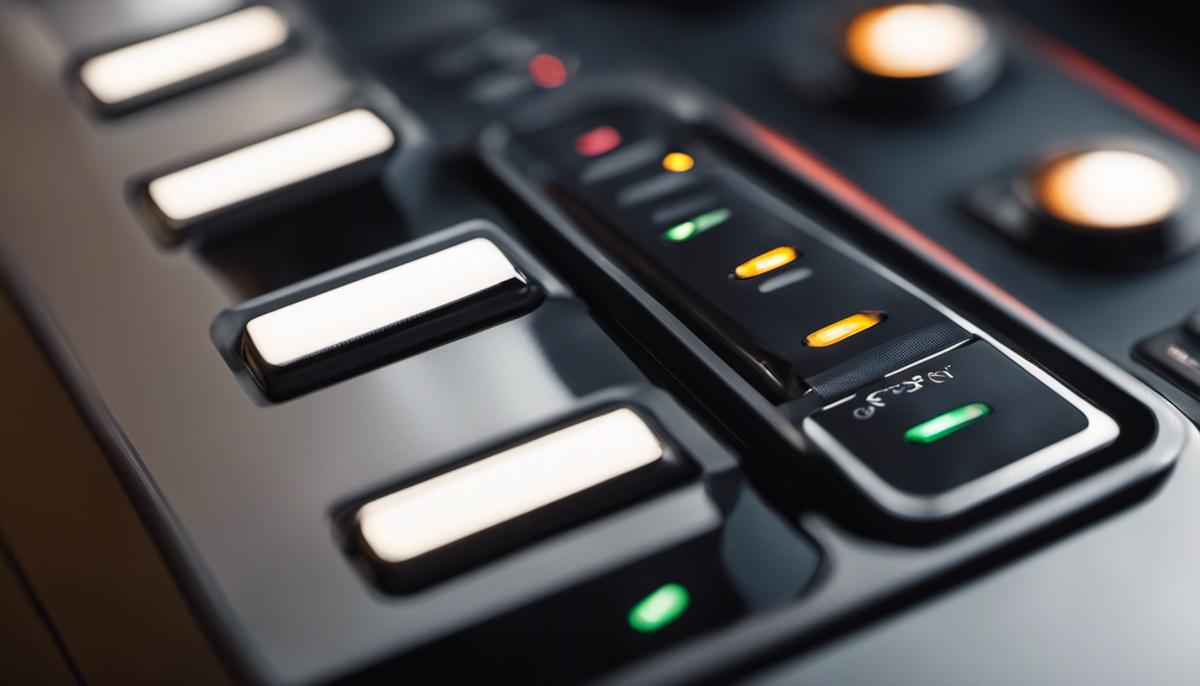
Case Studies: Role of Click Track in Iconic Songs
Tuning into the archives of world’s most iconic songs, one gets an awe-inspiring musical treat. An invisible conductor weaves magic, joining varied strings of melody, rhythm, harmony, into a symphony that transcends boundaries and unites hearts. But ever wondered what wields the magic wand to create this extraordinary chorus of cheer and resonance? Right, you got it – it’s the click tracks!
Remember Led Zeppelin’s “When the Levee Breaks?” The thunderous drums that gave the rock ballad an echo effect! Little do many know that it was the artfulness of the click track that made the drums reverberate throughout the song. Bacchanalian beats synchronized with absolute precision, the emotion of rebellion resonates through variegated tempo mapping, all helmed by the click track.
Who can miss The Rolling Stones’ classic “Honky Tonk Woman”? The stellar composition features a cowbell supplemented by the click track, adding a zesty living pulse to the rhythm. The click track thus transforms from a star backstage, the invisible metronome, to an on-stage artist, leaving an indelible auditory cue in our minds.
Moving towards the realm of pop,”Billie Jean”, Michael Jackson’s stunning masterpiece, presents the perfect alliance of the click track with electronic music production. The track’s unforgettable bassline rhythm, so smoothly aligned with the click track, gives a sturdy backbone to the song, making it a perpetual favourite across generations.
Legends like Pink Floyd took the augmentation of click tracks to a whole new level. In their surreal ensemble, ”Time”, they introduced flexible tempo mapping, using increased accelerando and ritardando that created a more poignant and alluring tune. As the song passes from one phrase to another, from the sonorous tick-tock to the alarming bell rings, the music lurches, intoxicates, and numb the listeners. A guitar solo that’s claimed its place in the Hall of Fame, intricate layers of click tracks create a unique time signature that has inspired countless musicians around the globe.
As demonstrated, the click track has been an unsung hero, a conduit of creativity catalyzing the energy, rhythm and spirit of some of the most iconic songs in history, majorly shaping their far-reaching impacts. From Rock ‘n’ Roll to symphonies, from Jazz to electronic, the precision of the click track has assisted in transforming raw artistic ideas into quality composition.
As music aficionados, while we toe-tap to the beats, sway with the rhythm, and hum the melodies, let’s also pay our tributes to the click track – the heart-throb, the pulse generator, the unsung maestro, which keeps the musical world in rhythm.
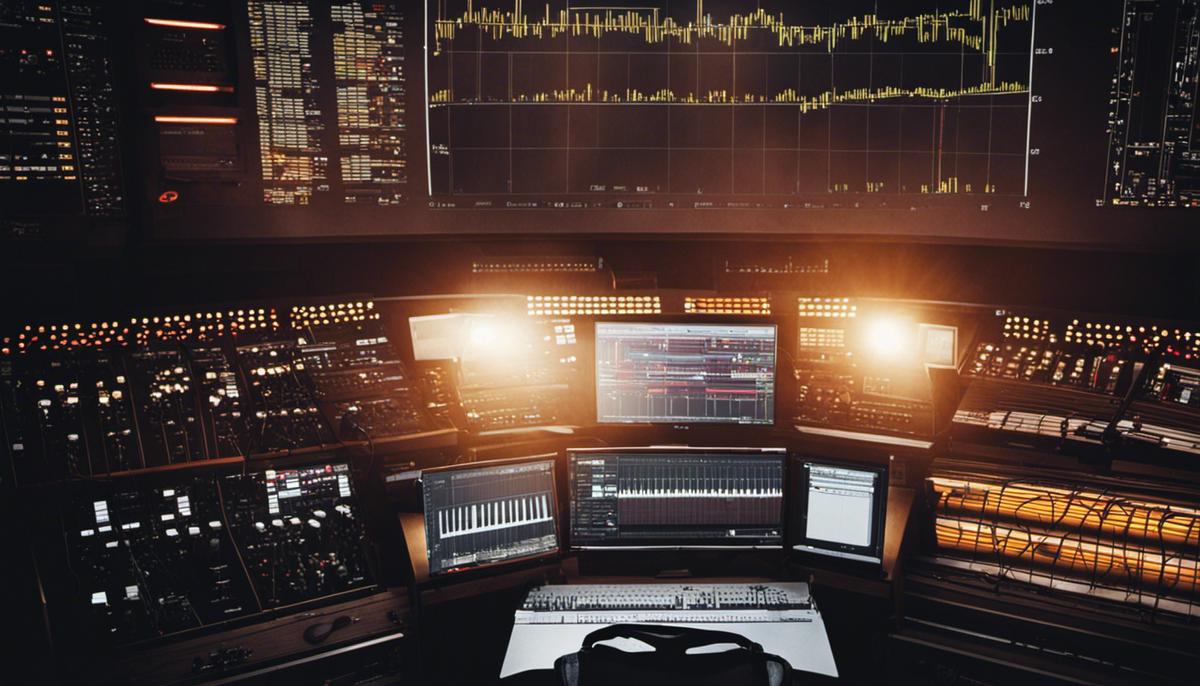
As we traverse through the extensive landscape of musical prowess, the humble click track rises as an unsung hero, propelling music to the heights of perfection. Its intricate dance with timing peppers every piece with personality while technological innovations continuously redefine its artistry. Buried within the heartbeat of iconic songs, the click track stands testament to the symphony of timing, accuracy, and emotion that characterize music. Nonetheless, the adroit application of advanced click track techniques requires skill, astuteness, and an innate passion for sound – attributes that, when honed, can transform any hobbyist into a maestro. The harmony within the cloak and dagger world of click tracks continues to resonate, painting a myriad of rhythms that underline where we’ve been, where we stand, and the multifaceted musical cadences to which we’re headed.
Unlocking the world of Digital Audio Workstations (DAWs) can be both exhilarating and daunting for any enthusiast or hobbyist. A solid understanding of the basics of DAWs, the range of software available, their operating procedures, and the array of tools they offer is fundamental to mastering this complex sphere. To create, produce, edit, and mix music smoothly it becomes vital to not only recognize the frequent operational challenges including compatibility issues, optimization errors, and high CPU usage problems, but also devise ways to swiftly overcome these hurdles. This essay aims to be the guide to navigate through the common DAW issues while also providing practical solutions that enhance efficiency and productivity.
Understanding the basics of DAW
The Domain of Digital Sound: Unraveling the Magic of a Digital Audio Workstation
In the heart-swelling universe of music, where each note tells a tale and every rhythm pulsates life energy, the Digital Audio Workstation (DAW) is an omnipotent cosmic entity. It is the starliner that transports us through the vast expanses of the melodic cosmos, facilitating the ideation, creation, recording, and ultimate sharing of our symphonies. Mirroring the vastness of the universe it navigates, the DAW encompasses a complex interplay of elements and operations—an extraordinary intermingling that this discourse aspires to simplify.
At its core, a DAW is a piece of software—an alchemical vessel—unifying the numerous facets of music production. This transcendent toolkit includes editing, mixing, and mastering audio, stitching together an elaborate cartography of sound. Imagine a painter with an infinite palette: the DAW gives musicians a similar mastery over a bottomless well of harmonies and rhythms.
The workspace inside a DAW is distinguished by an audio timeline and a mixer. The audio timeline is the canvas where soundtracks transcend from individual strands of musical DNA to evolving, interconnected symphonies— birthed and nurtured through importation, slicing, time-stretching, and blending. On the other hand, the mixer is the fulcrum, the gear that balances and harmonizes the volume levels, equalization, and creative effects of your tracks, making each one resonate with the spirit intended.
Another vital element is the ‘MIDI’, a dazzling string of digital notes, orchestrating a symphony of soft synthesizers and sampled sounds, from booming drums to celestial strings. Imagine a puppeteer commanding an army of musical instruments with each twitch of a finger—that is the power of MIDI at your command inside a DAW.
With the introduction of ‘Virtual Studio Technology’ (VST), DAWs are a playground for countless instruments and effects, granting musicians the ability to manipulate their soundscapes in ways no physical realm could allow. From transporting yourself inside the sinewy depths of an underground jazz club to perching upon crisp, ethereal mountaintops—the DAW has the power to be anywhere and interpret anything.
This wondrous journey through the cosmos of sound would not be meaningful without the very method of sharing those treasured compositions. The Export function of a DAW crystallizes our creative elixir into a shareable format. It’s the culmination, the apex—the moment when the starliner docks back to earth and the symphony, once an encrypted whisper in the cosmos, is unveiled to the world.
In navigating the DAW, the real adventure lies not in orbiting through these elements, but in their synchronization. The balance and harmony achieved from layering discordant beats into a symphony, converting abstract ideas into palpable sounds, bridging the gap between the human soul and technology—this is the magic of music making in a DAW.
Yet with such a grand universe to explore, remember to let the music lead. For in this limitless cosmos, the DAW merely holds the star charts—it’s the heart and the melody that guide our passage through the endless symphony.
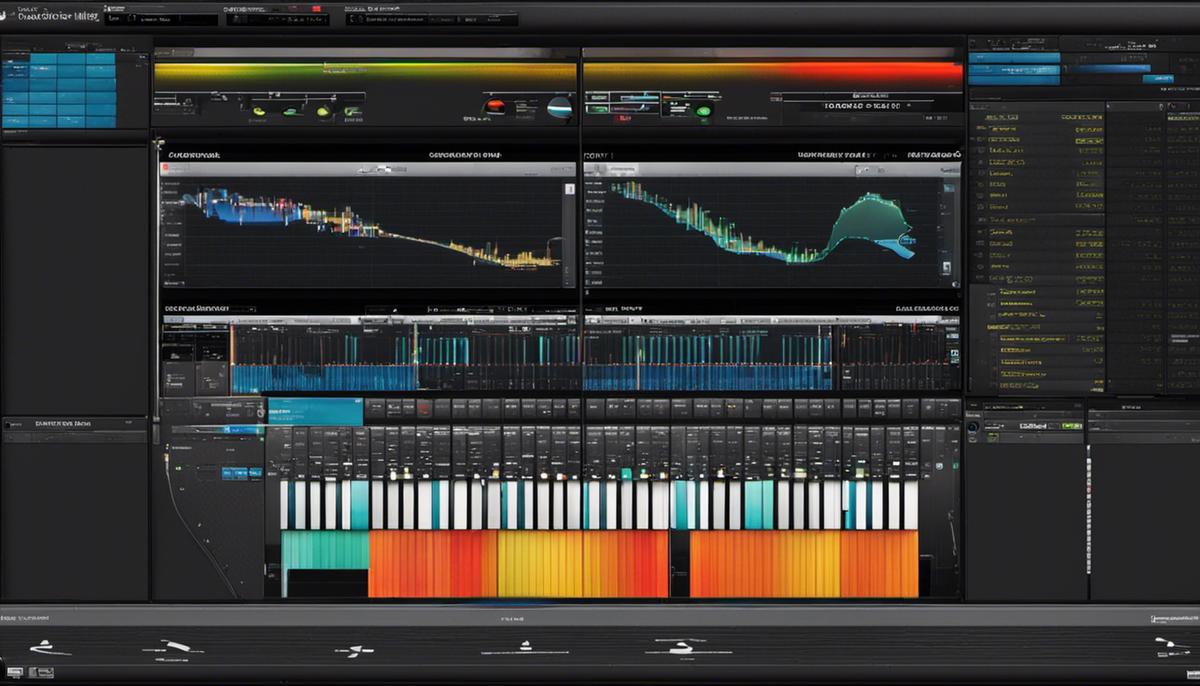
Identifying common DAW issues
With the ever-evolving techscape of our 21st century world, DAWs – our trusty Digital Audio Workstations, while full of seemingly endless possibilities, can sometimes surprise musicians and producers with unexpected technical glitches. These can be daunting, but armed with knowledge and a bit of troubleshooting prowess, one can conquer these challenges and return harmony to those symphonic soundscapes. Here, we delve into a few common technical glitches with DAWs and present some tips on how to identify them.
1. Sudden Latency
Perhaps you’ve just started crafting a tranquil ambience when suddenly there’s a maddening delay between your input and the sound from the DAW. This latency often arises from a few potential culprits. It could be due to a high buffer size in your audio interface settings or perhaps a CPU-heavy plugin is causing a delay. Keep an ear out for input lag and a vigilant eye on your CPU usage.
2. Plugins Crashing DAWs
A finely-curated collection of plugins is like a treasure trove for any music maker. However, sometimes, these digital gems can cause a DAW crash. This could happen if the plugin is incompatible with your workstation or if it’s simply outdated. To troubleshoot, make note of the specific conditions under which your DAW crashes – is it when a certain plugin is loaded or used in a particular situation?
3. Distortion and Clipping
Having those vibrant harmonics suddenly morph into harsh distortion and clipping can be disruptive to the creative flow. These glitches are generally a sign of overloading your DAW’s master output. Monitoring and utilizing your DAW’s inbuilt metering tools can help identify and avoid pushing your workstation beyond its limits.
4. Unexpected MIDI Response
A MIDI keyboard, a lifeline in the world of DAW, sometimes behaves erratically, playing ghost notes, generating stuck notes, or performing unintended functions. This could spring from poor MIDI data transmission. Be aware of erratic playback behavior, and don’t dismiss those phantom notes without checking for possible MIDI issues.
5. VST Dysfunction
Sometimes a certain VST might act out, refusing to function properly. This can typically result from an incorrect installation. Look out for inconsistencies in the performance of your VSTs, and be mindful of possible reinstallations.
6. DAW Freezing
There’s nothing quite as alarming as your creative canvas, your DAW, suddenly freezing as though suspended in time. This could be a result of maxing out CPU resources on too many tracks or large sample libraries. Keep an eye on the performance of your DAW and manage the resources diligently.
Remember, while each DAW is a universe unto its own, filled with virtual rivers of frequency and mountains of melodies, they, like any software, can potentially encounter technical troubles. But these glitches should not debilitate the creative process. With an understanding of these common issues, one can swiftly troubleshoot and return to the divine artistry of music creation, letting the symphony of your soul dance unencumbered through the musical cosmos of your DAW.

Resolving DAW errors
As the symphony of composition unfolds in the limitless realm of Digital Audio Workstations (DAWs), certain technical hitches sometimes impose an unwanted pause in our creative journey. Let’s delve into the realm of common DAW troubles and explore methods and strategies for troubleshooting them, to ensure that our musical narratives evolve seamlessly.
Latency issues can suddenly transform the joyous act of creating music into a tiresome struggle. Stepping in with fortitude, we can implement several strategies. Start by trying lower buffer settings; but if sounds begin to stutter, raise them a touch. Check for any unnecessary running applications as they might hog the CPUs causing interference. Experimenting with different sample rates can help, always remember – higher sample rates induce lower latency.
Plugins crashes are like unexpected interruptions in a finely-tuned orchestra, bringing the symphony to a halt. As a preliminary step, check for updates and install any that are available. If you’re still encountering issues, consider uninstalling and reinstalling the plugin. Reboot your DAW and try isolating the problematic plugin by a process of elimination, this often highlights the specific issues.
Distortion and clipping, like discordant notes in a melody, interfere with the harmony of sound production. Make it a point to monitor input levels regularly; high levels can often lead to dreaded clipping. Always keep headroom in your mix and use limiters to prevent the audio from peaking.
Unexpected MIDI responses are like an impromptu jazz section that you weren’t prepared for. The key lies in going back to MIDI mapping and verifying all the links. To ensure that your musical conversation isn’t disrupted, confirm that your MIDI device and DAW are in sync by checking device drivers and firmware.
VST dysfunctions, akin to a player going off-key, disrupt the beautiful harmony of the virtual orchestra. Begin with updating your VST; this often fixes glitches and bugs. If you encounter issues with a newly installed VST, consider uninstalling and reinstalling it. Sometimes, relocating the VST’s path in DAW preferences can also resolve issues.
Finally, let’s address the dread many composers have faced – DAW freezing and performance issues. Updating your DAW and operating system can often clear out these frosty interferences. Increasing buffer sizes and closing unnecessary applications can ease CPU demands. If all else fails, a complete reinstallation of DAW might be required.
In the grand theatre of music composition within DAWs, we continually dance with technology and creativity, forming harmonious symphonies and thrilling encores. As we journey within this digital realm, let’s wield these troubleshooting strategies as scepters, empowering us to overcome technical impediments and orchestrate our musical masterpieces unimpeded. Whether you’re a MIDI maestro, a VST virtuoso, or a DAW devotee, remember, every technical hiccup is merely a prelude to the symphonic serenade awaiting on the other side.

Photo by paipai90 on Unsplash
Embarking on the journey to resolve Software snags on DAWs is enlightening and rewarding. The exploration starts with comprehending the basics of DAW software and then identifying the hurdles one could encounter. However, acquiring the tactical knowledge on enhancing system performance, reducing latency, and preventing data loss aids in not only resolving the common DAW issues but also ensures seamless music production, editing, and mixing. The ability to quickly diagnose and rectify issues can help one maximize the power and potential of a DAW, turning challenges into creative opportunities for musical growth.
The art of vocal harmonies is a symphony, where voices intertwine to create something magical and melodious. This captivating vocal arrangement is much more than merely singing different notes at the same time. It involves understanding the structure of vocal harmony, developing keen listening skills, and acquiring adeptness at recording multiple vocals simultaneously. Comprehending the concept of melody versus harmony, exploring the intricacies of chord structures, and developing an ear for pitch, tone, and rhythm are fundamental elements in mastering this art. The goal is to blend these harmonious elements seamlessly, creating an immersive auditory experience that moves and resonates with listeners.
Understanding Vocal Harmony Structure
Harmonizing Grace: Unraveling The Secret Of Harmony Structures In Vocal Recording
In the euphonic universe of music, harmony is not just a musical technique but an interplay of emotion, expression, and rhythm that shapes the soul of the melody. The intertwining of voices in harmony produces that exquisite mosaic effect that engages the listener and pulls them into the heart of the piece. It’s the secret ingredient that adds depth and dimension.
Harmony is the symphony beneath the melody, like a painting beneath the brush strokes. It has the power to elevate a single tone into a symphony that resonates within the heart of the listener. But exactly how does harmony come to life in vocal recording? Let’s dive into the deep end of the harmony structure pool and discover its secrets.
First, harmony must have a root. In the language of music, the root is also regarded as the “tonic” or the first note of a scale. The root note or the melody line provides the fundamental stepping stone to building the harmony.
Next comes the harmony’s strings—thirds and the fifths. If a melody lies on the root or the ‘tonic’, the harmony’s base will be in the 3rd and 5th notes on the scale. In simple terms, if the melody line is singing a ‘C’, harmony singer one would ideally adopt an ‘E’ (third) and harmony singer two, a ‘G’ (fifth).
Harmony then blossoms through chord progression. In a typical vocal recording, songwriters cycle through different chords while maintaining the melody. Usually, the chord progression in a piece follows a particular sequence known as the “Circle of Fifths”, but the freedom of creative expression allows for interesting and innovative progressions.
Following the creation, there is Conversational Harmonization. This technique is making waves in vocal recording. It involves the adjustment of harmony phrases to correspond and “converse” with the melody line, creating an enchanting back-and-forth, a dialogue of tones.
Intricacies of harmony don’t end here. There is also Antiphonal Harmonization, which creates a “call-and-response” pattern, and Ostinato Harmonization, where a repeating motif runs like a thread tying the harmony together.
Finally, a balance must be found. Too much harmony can overshadow the melody, and too little can leave a song sounding hollow. Like salt to soup, harmony should enhance, not overwhelm the melody.
Crafting a harmonious structure in vocal recording is not just about the technicalities—it’s about the artistry. It’s about blurring lines between different notes to create a masterpiece that resonates and throbs with life. With the right understanding and a dash of creativity, a song can be woven into a tapestry of harmony that sways the listener and immerses them in its rhythm.
More than knowledge, harmony requires practice, intuition, and a profound love of music. With these tools at hand, anybody can unravel the mystical chords of harmony, and craft a symphony that reverberates far and wide, uniting audiences in the universal language of music. Each harmony created then becomes a word, a sentence, a paragraph in the age-old narrative of human emotion, written in a timeless tongue everybody innately understands and responds to—Music.
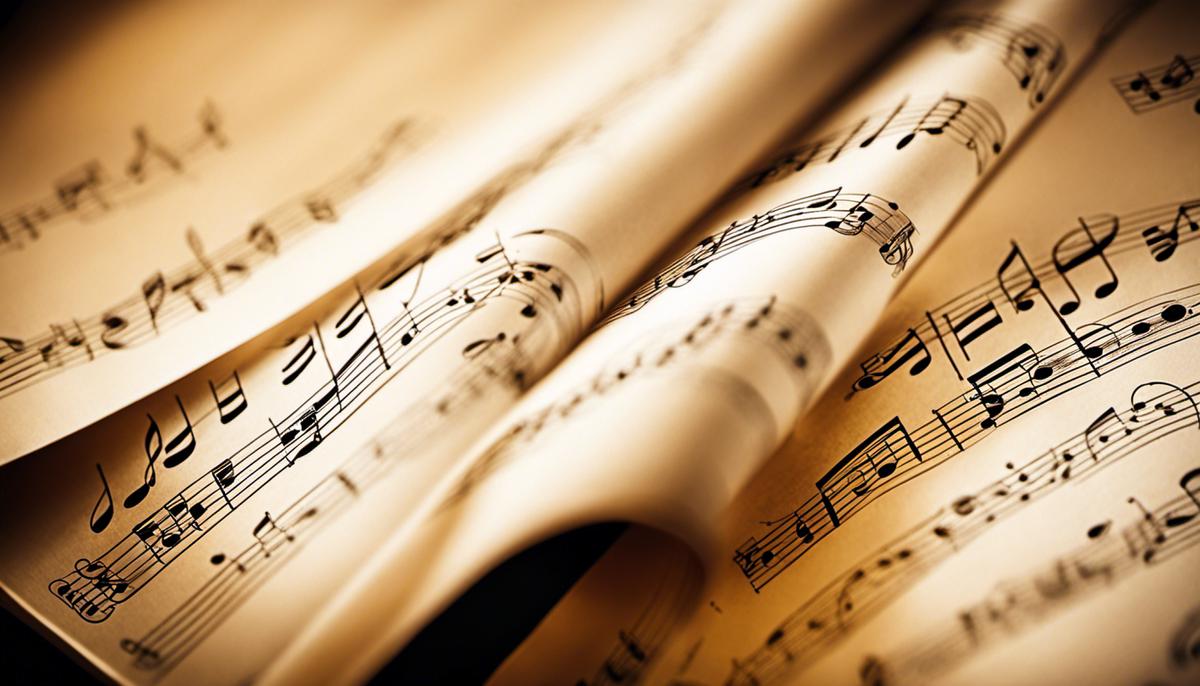
Developing Your Listening Skills
Configuring Your Harmonic Radar: Carving out Vocal Harmonies with Precision
Once you’re familiar with music’s essentials – root notes, chord progressions, thirds and fifths, and common techniques of harmonization – wrapping your ears around the fine details of harmony might require a little more attention. Just as a master painter imbues their final brush strokes with a touch of finesse, your auditory keenness can be polished to perfection, to grasp the finely nuanced vocal harmonies that are at the heart of our favorite melodic compositions.
First, we’ll dive into a concept we’re calling ‘harmonic dissection.’ This process stems from a purposeful repetition of a song with the intention of slicing it into its key components. This allows you to concentrate on the entire harmonic backbone as a solo entity, dissecting the intertwined vocal interplay by focusing on each individual layer. The best avenue to achieve this is by employing high-quality earphones. In-ear monitors, renowned for being highly isolating, offer an excellent choice for the discerning music aficionary intent on honing their harmonic acumen.
Among the must-have skills is the ability to identify and familiarize oneself with intervals. An understanding of the pause or ‘gap’ within notes makes for an essential navigational compass while charting the expansive sea of harmonies. Begin listening by searching out these intervals. Solfa, an ear training technique often used in musical education, can be your best ally here. Employing the solfa methodology to recognize different note intervals can sharpen your harmonic intuition.
Next up: the application of ‘active listening.’ This targets, not the passive listener, but the engaged maven who consciously pays heed to the harmonic nuances in a song. Often, while paying attention to the leading vocals or primary melody, we tend to overlook the subtlety underlying harmonies lend to the overall musical landscape. These essential elements add texture, depth, and color that make a composition unforgettable. Taking the time to develop active listening evolves your overall music appreciation by unveiling the hidden harmonic stratospheres that often lay unnoticed.
Another important tactic to cultivate harmonic mastery is by singing along with your favorite records. Though seemingly rudimentary, this technique actively engages your vocal chords and audial perception, symbiotically illuminating the road to harmonic prowess. Initiate this by starting with the melody, then veering off into harmony’s fascinating backroads, finding the less-travelled pathways that guide you into a deeper understanding.
Venture a step further and challenge yourself with ‘harmony mapping.’ This endeavor involves jotting down, visually sketching, or mentally picturing the full harmonic pathway of a song. In essence, you plot the harmonic shifts and transitions in a composed piece, availing a richer blueprint of its harmonic design. This exercise of ‘seeing the unseen’ opens divergent avenues of perception creating a more holistic understanding of the music you consume.
Witnessing live music can be a harmonically enlightening experience. It presents an unadulterated view into the intricacies of harmonies, showcasing how musicians meld individual voices into one symphony. Whether it’s an intimate gig in your local bar or an electrifying set at a music festival, the live music scene is a vibrant laboratory for harmonic exploration.
Collectively, harmony, when accurately perceived, broadens the auditory vista, converting the music experience from monotone to technicolor. Its atomic precision, coupled with sprawling imagination, culminates in a vivid universe of sound that lingers long after the final note fades away. So, immerse yourself, tune in, and let harmony illuminate your musical pathways.

Techniques for Recording Multiple Vocals
Crafting a vocal harmony that reverberates with the soul and resonates with the heart is an art of musical mastery.
This begins with the process of recording multiple vocal tracks effectively. Each voice is a color in the artist’s palette, adding depth, emotion, and texture to the musical canvas. This piece will converse about methods to bring those vocal tracks together in a harmonious symphony.
Starting off, let us talk about ‘Layering’. Consider the song a layered cake, each layer should enhance, and not overpower the other. Record the harmony layers separately, giving attention to each line as its entity. Everyone involved must articulate and tune their vocal parts perfectly to prevent any imbalance in the final mix. Use a quality microphone and avoid unnecessary effects during this stage; it’s all about capturing the raw, unfiltered expression of the vocals.
One technique that music aficionados swear by is ‘Panning’. This involves distributing the sound in a stereo or multi-channel sound field. For harmonies, it’s effective to pan different vocal tracks slightly off-center, allowing the primary vocal track to remain dominant while the harmony vocals surround the listener, creating a rich, immersive experience.
Audio editing software, like Pro Tools or Logic Pro X, can be your trusted ally in crafting beautiful harmonies. These programs provide functions like ‘Pitch Correcting’ and ‘Time Aligning’, which let you fine-tune each track, ensuring they blend smoothly. Remember, tools like these are to augment your creative vision, not dominate it; let organic originality reign.
Another significant aspect of recording multiple vocal tracks is the ‘Mic Technique’. Vocalists must keep the right distance and angle from the microphone; this can vary according to the voice type and the mic used. Experiment with this till you find the sweet spot, where the voice is captured accurately.
‘Track Doubling’ can also bolster harmonies. In this technique, each vocal track is sung and recorded more than once. It has been widely used by eclectic musicians such as The Beatles and Led Zeppelin. If layered carefully, doubles can fortify the vocals, enhancing the texture and depth, making the harmony robust and captivating.
Lastly, upon recording, it’s now time for the ‘Mixing’ phase. Balance the levels, apply creative effects like reverb or echo, and accentuate certain vowel sounds. This process will meld the voices into an interconnected musical experience.
Let this guide punctuate your recording sessions with triumphant exclamations of harmony. Remember, the ultimate goal is to paint a soundscape that stimulates listeners, transports them to an aural utopia, and binds them through the sacrosanct language of music. Each voice, each note, is a potent whisper in the hum of the cosmos, contributing to the all-encompassing symphony of harmony. So, take the plunge, tap into your creative soul, and forge harmonious vocal tracks that echo through eternity.
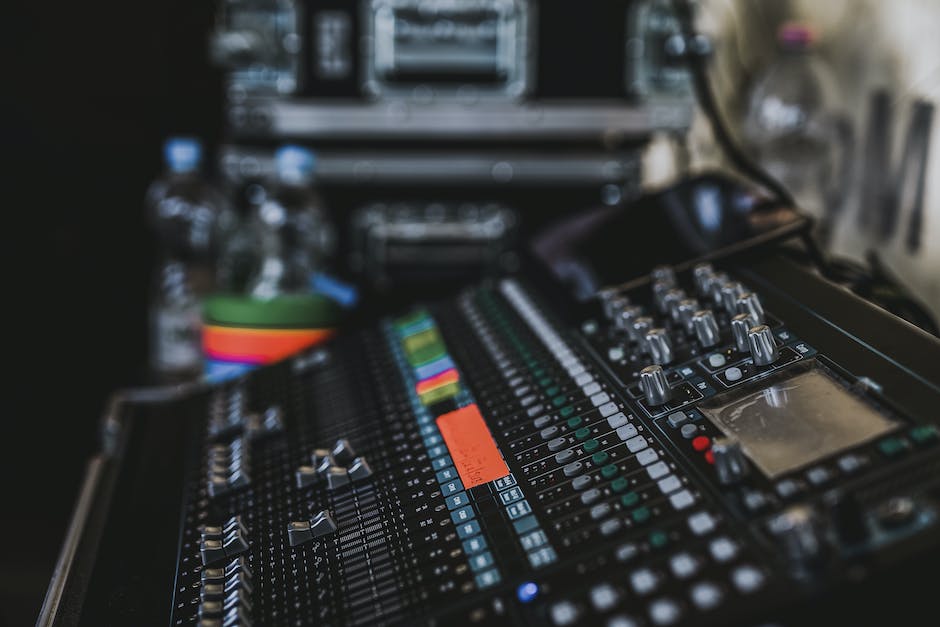
As we delve into the artistry of vocal harmonies, it becomes clear that the path to creating perfect harmony is about careful craftsmanship. With a deep understanding of vocal harmony’s structure, sharpened listening skills, and the proficient execution of multiple vocals recording techniques, one can indeed create mesmerizing harmonies that amplify the emotional resonance of a song. Remember, the beauty of vocal harmony lies in its blend – each individual voice contributes to the whole without losing its unique essence. As you continue to experiment with these techniques and refine your skills, may you find joy in the journey and elevation in the harmony you create.
In the world of audio optimization, mastering the art of speaker placement, monitor mixing, and troubleshooting calibration issues is paramount. The role of speaker placement goes beyond simply setting up audio equipment; it brings into play a delicate balancing act of acoustics, size, and position to optimize sound quality. With effective monitor mixing techniques, we can further refine the sound produced, ensuring a harmonious balance of volume levels, effective equalization, and appropriate use of effects. However, even in the best conditions, calibration problems may arise. These challenges need to be addressed to maintain the integrity of our sound system, and understanding their common causes and practical solutions is an invaluable skillset every audio enthusiast or hobbyist should have.
Understand Speaker Placement
The unmistakable beat of a drum. The resonating strum of a guitar. The captivating melody of a piano.
Music, in its myriad forms, has the transformative capacity to pull the heartstrings, ignite the imagination, and converge the sentiments of diverse beings into one shared experience. As though a grand symphony, speaker placement plays a pivotal role in shaping and perfecting the harmony that pours into our ears, turning an ordinary room into a veritable concert hall.
Picture this: you’re ensconced within the warm, welcoming embrace of a jazz café. The scandalous purr of the saxophone wraps around you, the rhythmic sway of the double bass dances promise by your feet, and the delicate patter of the piano engages in an intimate tête-à-tête with your heart. Such is the magic and beauty of proper speaker placement. By carefully orchestrating the positioning of these sonic ambassadors, streamlined sound paths are created, offering a vibrant and immersive musical experience – allowing sound to transcend from mere notes into pure emotion.
Every speaker plays a role, much like the musicians in our imaginary jazz ensemble. The bass, ardent and grounded, provides the ‘heartbeat’ to every song. In contrast, the treble, like the wistful whisper of a violin, carries the ‘voice’ of a melody. When these elements are disarrayed, the audio clarity gets lost, and the soulful narrative of the song is betrayed. Hence, speaker placement requires keen attention to detail and space acuity to succeed in striking that perfect balance between these musical contrasts.
Imagine your listening room as an artist’s canvas; vast, expansive, and eager to capture your aspiration. Placement near boundaries such as walls and corners can lead to bass ‘loading,’ essentially amplifying the lower frequencies, tipping the balance of the invigorating symphony that you aim to create. Equally crucial is the acoustic interplay between speakers and the natural reflectivity of the room. Neglecting this aspect can lead to an echo-laden audio, marring the musical clarity with unwanted reverberation.
The optimal togtherness of your speakers, or in audiophile parlance, ‘toeing in’ also plays a significant role in audible perfection. The ideal speaker angle forms a triangle with you, the listening destination. Misalignment of this auditory equation can cause phase issues and muddle stereo imaging, leading to a deceptively weak or skewed sound as opposed to an orchestra of audio delight.
Distance from the listener comes into play as well. This is much similar to attending a live concert where your experience immensely varies depending on whether you’re front row, middle, or at the back. Too close might heighten certain elements; too far may lessen the overall impact. Find the sweet spot: where the music envelops you, much like how an artist’s masterful brush strokes fill a canvas.
Rendering of speakers at high frequencies, like the intricate color patterns weaved by a rainbow, hinges on their height and orientation. Treble frequencies are highly directional, and misplacement can result in taking the zing out of the crispest notes. As a rule of thumb, tweeters should be at ear level for an optimal aural feast. Similarly, speaker stands and mounts aid in minimizing unwanted resonance and ensuring the most accurate sound reproduction.
In this world where music is the lifeblood of joy, camaraderie, and solace; the art, the science, and the magic of speaker placement is an unseen symphony maestro, choreographing the paths of melodies and rhythms into our hearts. Musical ecstasies are but a speaker’s placement away. So, let us embark upon this enchanting journey of perfect positioning, guided by the inextricable bond of love for sonorous symphonies and musical harmony. Let our hearts beat in tandem with every strum, every beat, and every note, enveloping us in the heartwarming cocoon of harmonious euphoria and aural delight.

Monitor Mixing Techniques
Stepping beyond the realm of the primordial importance of speaker placement, we venture into the realm of monitor mixing techniques. The crux of live audio, blending art and science, monitor mixing provides performers with accurate sonic reflections of their performance in real time.
At the heart of these techniques is the ability to balance input and output signals. It’s a sonic dance, made of subtle adjustments to volume, depth, and dimension. Mixing is an audible language of finesse – DJs, audio engineers, and musicians manipulate the optical fibers of sound to paint an immersive sensory escape.
The equalization process, or EQ, is a technique integral to monitor mixing. EQ shapes and molds the tonal quality of the sound before it reaches the speakers. By manipulating the amplitude of audio signals at particular frequencies, we can create lush, vibrant soundscapes— or strip sounds to their raw, undiluted forms. EQ is a brush of audio painting, caressing the canvas of silence with pigments of rhythm and harmony.
Next is the Gain structure, a significant player in the world of audio mixing. Adjusting gain allows for the maximization of signal strength while keeping distortion and noise to a minimum. Mastering gain is akin to harnessing the raw power of sound, tuning it into a potent symphony that respects the eardrum as much as it engages it.
Talking about monitor mixing without discussing feedback would be a disservice. The art of feedback management not only staves off unwanted audio disruptions but also preserves the integrity of the musical narrative. A good audio engineer can sculpt feedback like a potter shapes clay, turning potential disaster into creative opportunity.
The Panorama technique, representing the spatial depth in audio mix, is akin to casting a sonic holograph into listeners’ senses. Panning is the invisible architecture of sound that constructs a three-dimensional audio excursion.
Compressors are the iron-fisted guard dogs of monitor mixing. They ensure that no sound peaks go rogue, influencing the dynamic range of audio output. Wielding a compressor is like breeze guiding the leaves – it’s gentle, steadying yet transformative.
By mastering these techniques, the monitor mixing maestro choreographs a dance of decibels and frequencies. Their audio tapestry weaves music into air, whispering tales of melody and rhythm that embrace and intoxicate listeners. The process, much like the passionate dégustation of headphones or festival hopping, is an immersive tactile plunge into the heart of music.
In the end, the key techniques used in monitor mixing are not just tools; they’re the strings of an invisible harp, playing the symphony of our perception. From the subtle notch of an EQ to the firm hand of compression, each technique is a verse in the poetic language of sound. The result? A vibrant, aural celebration spinning on the axis of harmony and rhythm, resonating warmly in our hearts.
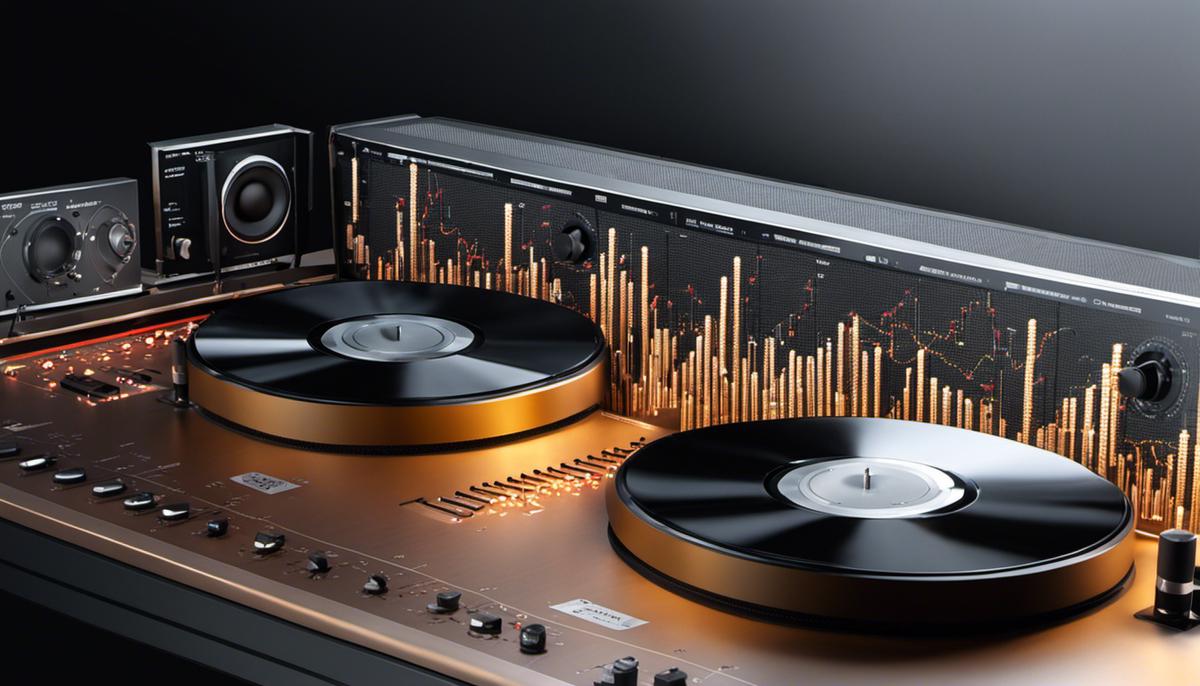
Troubleshooting Calibration Problems
A love for music, in all its splendor and quirkiness, carries a resonance that extends past the mere art of listening. It fosters a ceaseless quest for mastery and integrity within the realms of expanded auditory experiences. And as our journey delves into the confluence of art and science that defines audio technology, we grapple with challenges that stray our soundscape from its absolute brilliance – among these, speaker calibration issues.
Speaker calibration is the fine-tuning tool that refines and perfects our auditory experience. It lies in its ability to sculpt the raw power of sound with precision, transforming the listening space into a conduit for musical symphonies to express their truest self. Calibrating speakers, therefore, is not merely a technical endeavor, but a poetic pursuit to connect deeper with the symphony of the universe.
When subtle but unnerving hollowness cloaks your music, or a muddying distortion veils its clarity, common speaker calibration issues are often at play. Identifying and resolving these issues is akin to treating a symphony with a fine comb, shaping strands of undulating harmony into a coherent & emotional narrative that talks directly to your soul.
If unfavorable resonance is robbing your music of its naturalness, it’s crucial to recalibrate by seeking out the source and adjusting accordingly. Sometimes, it lies in the operator error, perhaps inadvertently placed volume controls causing overdriven inputs or unbalanced output levels. In such cases, rectifying the error is as simple as mastering the finesse of in-sync volume adjustments.
A balanced live audio experience is as much art as it is a science. Leveraging monitor mixing techniques to ensure that each instrument and voice retains its distinct signature while contributing to the musical narrative becomes essential. Balancing input and output signals by checking levels and adjusting volumes throughout the performance, focusing on the role each sound plays in the mix, can deliver a live sound that is well-contoured and potent.
Perhaps the speakers are producing unbearable feedback, characterized by howling or shrieking sounds. This problem can be averted by directing your microphone away from the speakers, adjusting your personal hearing aids, or even using a directional microphone.
And then there’s the ubiquitous equalization (EQ). Important to note is the vitality of a well-mastered EQ – it’s like the conductor of your musical symphony, overseeing and enhancing every nuance. When the EQ balance is off, it’s like a symphony orchestra playing wildly out of sync, squandering the potential for a unified and harmonious performance. But fear not, adjusting the EQ is a straightforward way to resolve common calibration issues, bring out the richness and depth of different tones, and facilitate an immersive connection.
Next, the gain structure needs attention if your sound seems to be consistently distorted or overly weak. This aspect of calibration requires adjusting the strength of your signal to ensure optimal transmission without distortion, the great enemy of a well-rounded acoustic experience. Another fundamental feature to inspect is compression, which can control sound peaks and expand dynamic range.
Music is also about space, and the panorama technique is a key to unlocking the beauty of spatial depth. By adjusting the stereo field, it’s possible to enhance the listening experience by simulating a real live setting and creating a wide sound image.
Calibrating speakers, in essence, is a dance of fine adjustments, each contributing to the creation of a balanced, vibrant and emotionally resonant soundscape. It marries the technical with the artistic, the tangible with the ethereal, the notes with the silence quite like a symphony – an unseen maestro creating magic in the midst of chaos. With patience and care, it’s possible to rectify even the most tenacious of calibration issues and build a sonic sanctuary where music can spread its wings and fly.
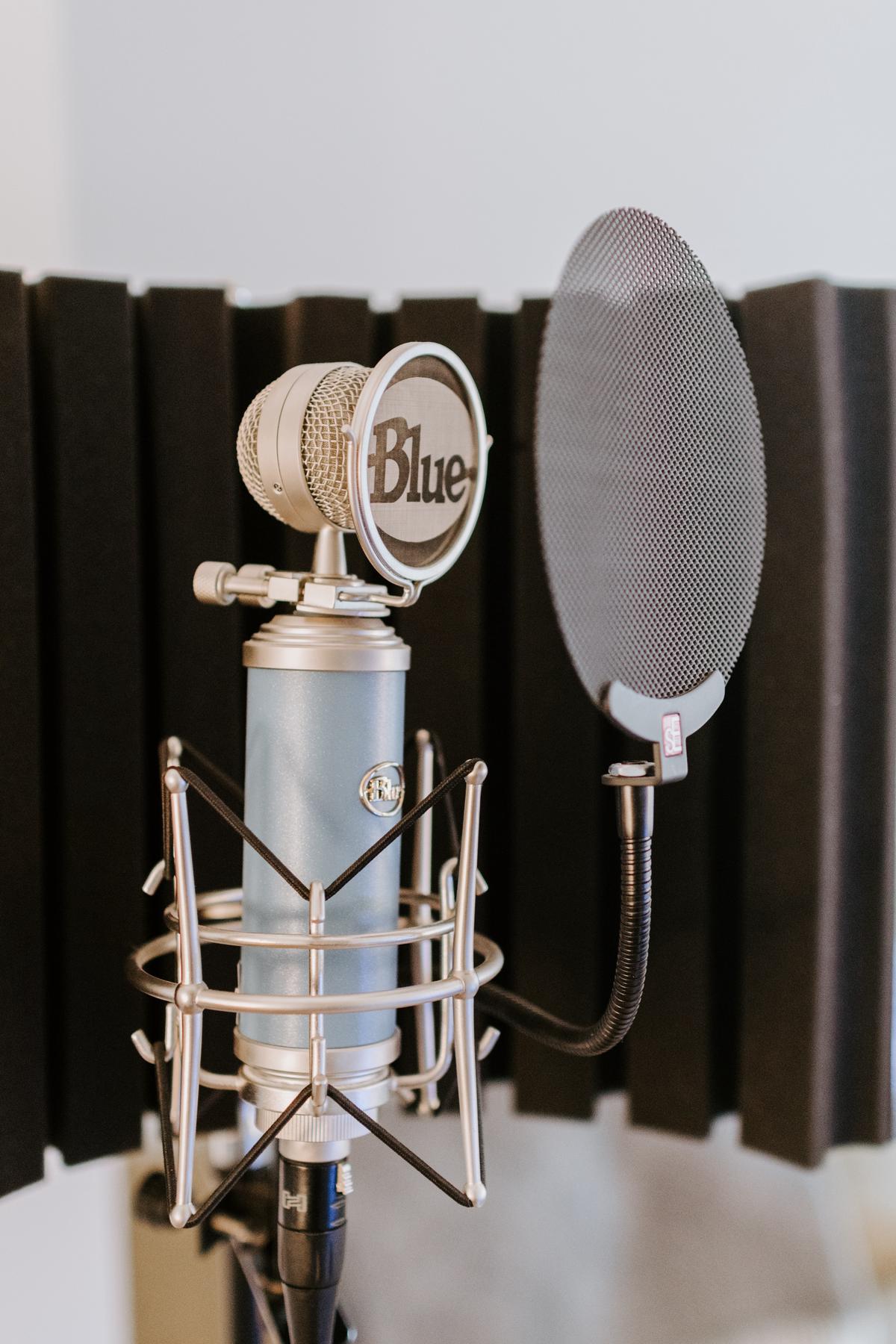
Photo by kellysikkema on Unsplash
The journey of becoming an adept hand in speaker placement, monitor mixing, and troubleshooting calibration problems is far from an easy task. It requires dedication, a keen ear for detail, and an insatiable hunger for continuous learning. However, when accomplished, these skills can make a world of difference in sound production and quality. By fully comprehending your room’s acoustics, mastering how to balance volume and manage equalization, and becoming proficient in rectifying common calibration issues, you stand to gain not only an improved audio output but also an enriching journey into the complexity and beauty of sound.
The art of music production is as intricate as it is exciting, with the power to elate or deflate quite literally in the ‘mix’. One aspect of the process that often presents a tricky challenge is audio compression. Compression, while seemingly simple, is delicate, wielding immense influence on the overall quality of the final mix. It can tighten up a mix, control dynamic ranges, and add a pro touch, yet when not properly implemented, can swiftly turn the mix into an aural disappointment. The following discourse illuminates the complexities of avoiding over-compression, an often overlooked yet crucial element to achieving sonic balance in your mix. Diving deep into this compression conundrum, we will explore the foundations, dangers of overuse, the elusive balance, escaping techniques and finally, how to evaluate it all.
Understanding the Concept of Compression in Music Mixing
Underneath shimmering stage lights, amidst the thumping heartbeats of die-hard music fans, a shared and understood truth emerges: it all comes down to the mix. Whether it’s a soulful strum of a guitar, the heart-wrenching whimper of a piano, or the mesmerizing rhythm of a drum beat, each sound contributes to the whole. And within this symphony of sounds lies the oft-unappreciated art of audio compression—an indispensable secret weapon of seasoned audio engineers the world over. The question arises, then, how critical is understanding the essence of compression in creating the ideal mix?
Stand on the shoulders of music production giants and you’ll see a world where each individual sound must share space with the others, a realm where the delicate seesaw of numerous elements slotting together to form the perfect mix is a necessity rather than an indulgence. At the heart of this harmonious equilibrium—our trusted, yet misunderstood sidekick—compression.
Hiding in plain sight, compression is the unseen conductor guiding the symphony of sounds within a mix. It ensures balance and prevents chaos, curbing overly boisterous instruments that may seek to drown out their other counterparts. A fine-tuned understanding of compression is like acquiring a magical key that unlocks a hidden realm in music creation, allowing the shaping, bending, and molding of sounds to fit the artist’s vision.
To grasp the essence of compression, we draw upon the compelling marriage of science and emotion. The science clusters around regulating the dynamic range, delicately taming the loudest peaks while elevating the softest whispers. The emotion comes from creating a full-bodied sound that resonates deeply with listeners, wrapping them in an intimate sonic blanket.
Even amidst the intoxicating cocktail of bass drops and blues scales, the secret sauce of compression pays homage to an old adage: less is more. But this does not merely mean less volume. No, it is a reduction in the dynamic range that births a mix where every element can shine without stepping on each other’s sonic toes. Compression bestows power upon the whispering subtleties and grants humility to the dominating elements of a mix, a dance of control that elevates a good mix to a masterpiece.
Of course, like with any artisan skill, knowing when to apply compression, and to what degree, takes copious amounts of practice, intuition, and a certain kind of ear. It’s a delicate balance of technical prowess and creative audacity. Restrained when it needs to be, and assertive when the mix demands.
So, let us revel in the recognition of compression for its vital role and let’s take a moment to laud this relatively unsung hero of music production. And here then is the truth, resonating loud and clear: in the tactile hands of a discerning audio engineer, an understanding of the essence of compression becomes the lifeblood of a transcendent mix, one that hums in the ears, strikes the heart, and unifies us all in the love of music. Because at the end of the day – music isn’t just about hearing, it’s about feeling, sharing, and experiencing together as one.

The Possible Dangers of Over-compression
In music production, the question is not IF one should use compression, but HOW MUCH to use. Like the careful seasoning of a master chef, this invaluable tool can elevate a mix to its zenith or plummet into a muddy abyss. Over-compression, often referred to as the “loudness war,” has ridden the waves of music production, both alluring and intimidating in its role in shaping the soundscape.
As a violent storm can shut out the beauty of a serene landscape, over-compression, too, obliterates the dynamics and subtleties inherent in a piece of music. While compression’s primary purpose is to tame peaks and balance the dynamic range, when applied excessively, it ironically leads to a flattened, lifeless mix. The loudness war results from this misuse of compression where producers, in an effort to create the loudest track, compress to such an extreme that it leaves listeners fatigued, bereaved of the emotional connection that music so abundantly promises.
Think of over-compression as the relentless noise in a bustling city, an unending symphony of distractions that leaves no room for the exhilarating sensation of silence. It doesn’t allow the music to breathe. The sonic texture of the piece is rendered palpably sterile, devoid of the infectious ebbs and flows that capture the vast spectrum of human emotions.
Take a moment to visualize a live orchestra: the bass notes carefully intertwined with the treble, the hushed whisper of the violins dancing with the robust boldness of the drums. Each instrument holds its unique charm, contributing to the harmonic whole. Over-compression bulldozes this distinctiveness, blotting out the soft murmurs, that whispering wind through the reeds, leaving only a loud monotone echo in its wake.
Furthermore, when we tread into the realm of diverse musical genres, over-compression becomes particularly egregious. From the enigmatic suspense of a lo-fi track to the lilting narrative of folk music or the throbbing energy of rock – diversity is the essence of the music landscape. Over-compression, in its relentless pursuit of loudness, strips away these nuances, leaving a music piece stranded in a wasteland of sameness.
This raises an important question – why does this menace persist? The driving force behind the loudness war is psychological – louder appears better to the human ear. The catch, however, is that this deceptive auditory illusion is short-lived. A listener’s ear quickly tires of the relentless onslaught of sound, leading to a detached and unmoving experience.
Music, in its purest form, is a compelling storyteller, a relentless explorer of the human condition. It weaves tales of joy, sorrow, longing and love, all within the confines of rhythm and melody. To experience music is to feel the rhythm of life itself. Over-compression, therefore, stands as a towering impediment in this exquisite journey. The key lies in striking an optimal balance, maintaining the dynamic contrast while achieving a subjectively loud mix. It is a dance of control, of knowing when to harness the power of compression, and when to let the raw, untamed dynamics breathe and bloom. After all, the symphony of life is beautifully diverse, and so should be the music that soundtracks it.

The Thin Line Between Enough and Too Much Compression
While the utility of compression in music production is undeniable, the surge of over-compression, particularly in the last few decades, threatens to muddle musical artistry. A result of the ‘loudness war,’ over-compression is a striking example of when the quest for greater volume becomes detrimental to the overall quality of music. Picture this; in the heart of a bustling city, the cacophony of blaring horns, rumbling engines, and chatter disguise the breezy whispers of rustling leaves – an auditory scenario that starkly emulates the effects of over-compression on a musical track.
When a musical composition is over-compressed, the dynamic range is squeezed to the brim, bleaching out the nuanced interplay between instruments. It’s as if their individual voices, each holding a different texture and story, melt into each other, losing their distinctiveness. The soft cello’s subtle undercurrent undulated by waves of violins or that quiet, aching twang of a bass behind the effervescence of electric guitars – over-compression blurs these fine lines, leaving a loud, flat wall of sound in its wake.
Contrary to the popular adage that louder is better, excessive compression creates a short-lived gratification that wanes once the novelty of the added volume fades. Listeners might initially perceive the elevated loudness as thrilling, but soon enough, the lack of ebb and flood in music dynamics saps the excitement and robs the art of its evocative potential.
Think of music as a sonic storytelling device, and dynamics as the plot twists and climaxes. When over-compression takes the reins, the auditory narrative becomes one-dimensional, and the subtle shifts in texture and tempo that invite listeners into an immersive experience are hampered. Victoria Williams’ poignant inflections that surge in “Crazy Mary” or the heartrending piano crescendo in Radiohead’s “Videotape” – the ability of such passages to stir emotions are contingent on their contrast to the quieter, subtler portions of the track.
So, what does it take to maintain the vitality of dynamic contrast while achieving a subjectively loud mix? This question is akin to asking how a conductor can empower each instrument in an orchestra to contribute its unique voice without overpowering the delicate symphony. The key lies in deliberate and nuanced use of compression – understanding the unique characteristics and demands of each instrument and genre and applying compression accordingly.
Over-compression, when excessively applied, is akin to depriving music of its vibrancy and reducing its rich palette of sounds to grayscale. The diverse genres of music are indeed a symphony of life itself, reflecting the plurality and rich experience of being human. Striking a balance with compression is tantamount to honoring the artistry of the individual player, the nuance of the genre, and ultimately, the beauty and complexity of the human condition. Music is a language that transcends borders, a universally relatable form of expression, it deserves nothing less than to be treated thoughtfully, respectfully, and passionately in every step of its creation and dissemination.
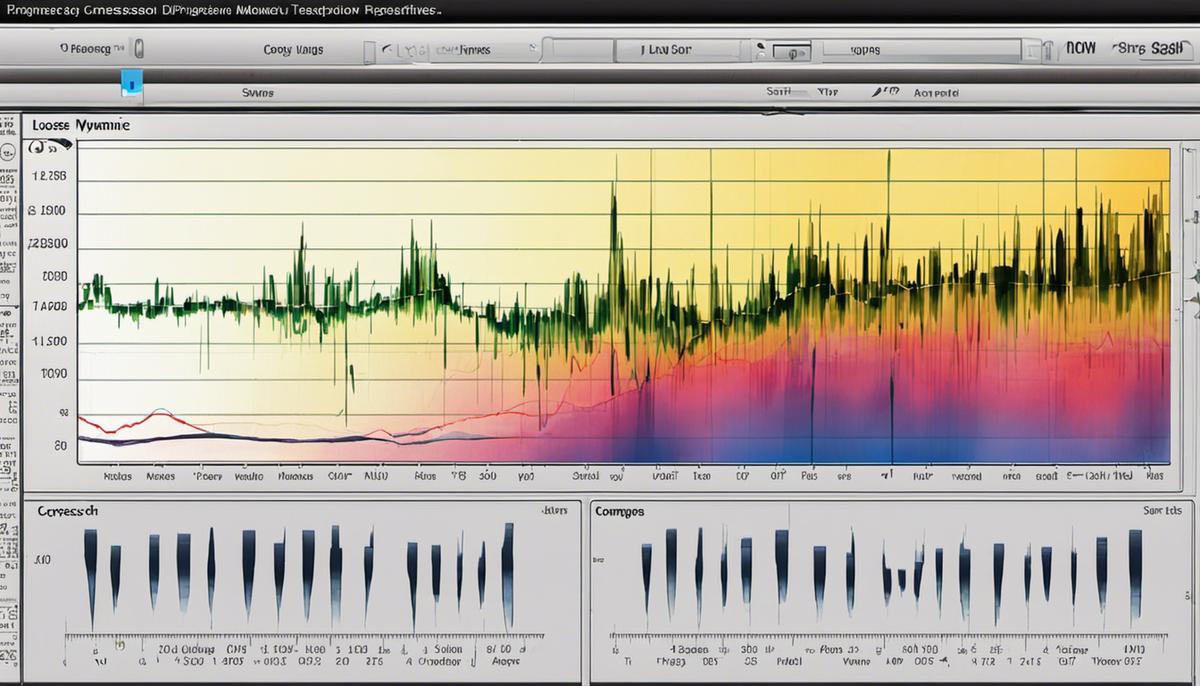
Techniques to Avoid Over-compression
Just as there is immense beauty in the quiet, subtle moments of a song that pull at your heartstrings, there is also raw power in an explosively loud and triumphant chorus that galvanizes your spirit. Compression’s unseen magic works to moderate these ebbs and flows, creating harmony between them. However, just as too much of anything good can become harmful, over-compression, too, poses a risk – draining vitality from the music, smearing the textures, and rendering an overall sense of sonic claustrophobia.
Our world has increasingly found itself in a ‘loudness war,’ as artists and recording engineers compress music to make it as loud as possible on the erroneous notion that loud equals better. Yet, in the process, they compromise on dynamics and subtleties that give music its life. An apt analogy would be a city laden with noise pollution – where silence is golden and loudness becomes exhausting, steadily stripping away at the charm of the city itself.
Over-compression, hence, is not just an issue with loudness, but a threat to distinctiveness and nuance in diverse musical genres. It wipes out the gentle strokes of a classical violin piece, the raw emotion of a raspy blues tune, the soulful timbre of romping funk bass – the soft edges that make each genre, each instrument, each artist, unique.
Paradoxically, the short-lived psychological perception that louder is better seems to reign supreme in the loudness war. Consequentially, the transient satisfaction of perceived ‘loudness’ triumphs over sustainable enjoyment of musical quality. The danger lies in numbing the audience’s ability to appreciate the emotional storytelling nature that music possesses – the interplay of delicate quietude and robust loudness.
An undervalued truth in the music production world is that striking a balance with compression maintains the precious dynamic contrast and the power to achieve a deceptively loud and satisfying mix. It preserves the vital relationship between the fluctuating sonic elements of loud and soft, allowing the music to maintain its innate character. To achieve this, it’s essential to understand the distinct characteristics of various instruments and their role within the genre.
With proper compression, music producers can ensure that the subtlety and dynamics that make music alive and vibrant are preserved. Refraining from over-compression breathes life back into the music – enabling it to express the human condition in all its varied shades. From a hushed lullaby to an outburst of rock ‘n roll, from the defiant beats of hip-hop to the subtle strums of a country ballad, music in all its variety, richness, and dynamic range is a reflection of the symphony of life itself.
As lovers, creators, and propagators of music, the responsibility lies in our hands to treat the creation and dissemination of music with the respect and passion that it so deserves. Stand down, loudness war. Let the music speak. Let the dynamics reign. Let the majestic story unfurl, from the hushed beginnings to the climactic finale, unmarred. Hear the melody, feel the beat, experience the story – in all its intended glory.

Evaluation of Under and Over Compressed Audio Files
So the question stands – how do you differentiate and adjudicate between under and over compression in audio files? It’s similar to distinguishing between a carefully crafted hand-ground cup of coffee and a burnt, over-roasted cup of joe from a blitzing production line. You’re looking for balance.
Comparing it metaphorically, over-compression rings equivalent to an overcrowded concert where every note fights for center stage, leading to a cacophony that loses its harmonic appeal. This is often known as ‘brickwalling’, where the audio waveform hits an imaginary brick wall, leading to distortion. The entire dynamic spectrum is squashed, rendering a flat, lifeless representation of a potentially vibrant and evocative musical composition.
Under compression, on the other hand, is much like a half-filled concert hall where the music fails to fill the space, leaving much to be desired. It lacks that striking punch that would otherwise captivate and move the audience. The dynamic range remains too extensive, and the smallest sounds can get buried and lost, while larger sounds may seem distinctly out of place.
So, how does one develop an ear for this?
Listening critically is key. By comparing and contrasting different audio files, you start honing your ability to discern the subtleties that denote over or under compression. Listen to how the different elements interact within the mix. Are some sounds being buried while others are hitting too hard? Does the track have the appropriate amount of dynamic range for its genre and intention?
Another tactic is to reference uncompressed versions of the same tracks. Many websites and tools offer comparisons, which can be insightful in training your ears.
However, it’s crucial to remember that audio compression is ultimately subject to personal taste and the artistic intention behind the piece. Therefore, maintaining a holistic view of the audio piece is paramount. It’s about ensuring that compression serves the song and its story, not dictating it.
From the vinyl aficionados who appreciate the warm ticks and ambient hisses that emphasize the physical delivery of sound, to the digital audiophile whose love for razor sharp sound devoid of any distortion, the passion for music unites us all. As music lovers and creators, we owe it to this universal language to ensure its integrity in all stages of its creation and propagation.
In conclusion, strive for balance. Understand the nuances of the audio-engineering realm, respect the sanctity of the music, and strive to facilitate, not dominate, its narrative. Remember: over-compression or its extreme lack is not a mere technical glitch; it’s a detour from the musical conversation that each track hopes to establish with its listener. As lovers of this cherished art form, let’s ensure that we treat music with the attention and respect it deserves in every form – even in compression.
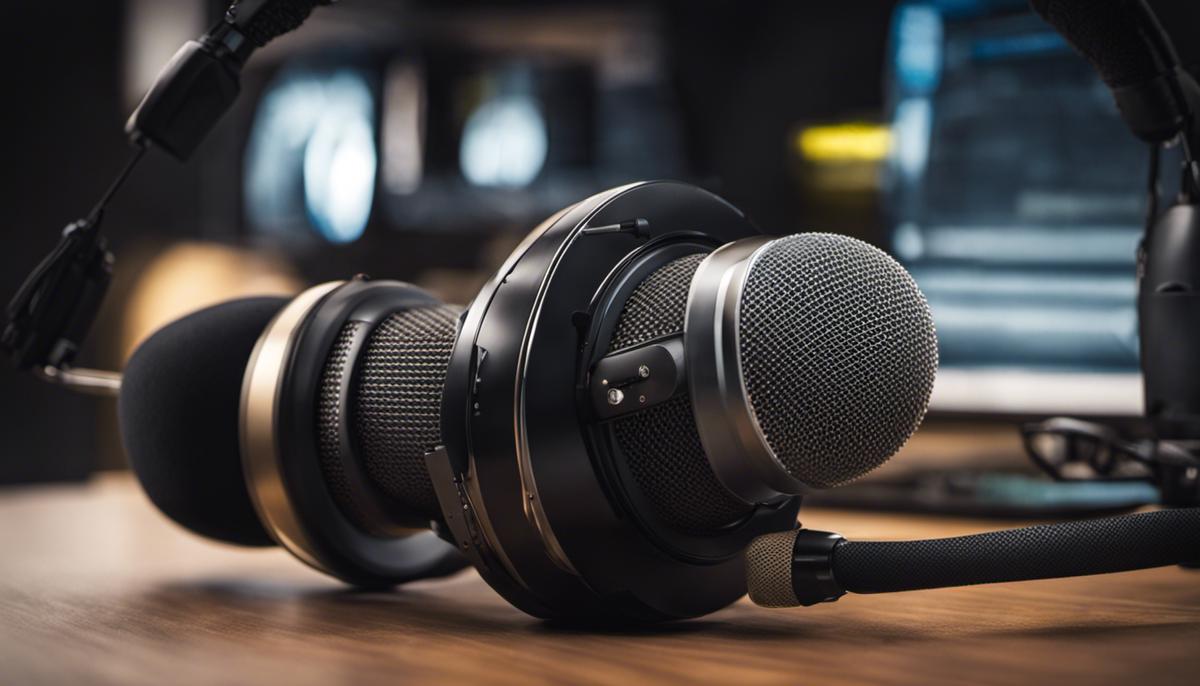
The journey into understanding and mastering compression in music mixing is far from a linear one, filled with constant learning and experimentation. The complexity and subtlety of the process can seem overwhelming, but with the right knowledge and tools, one can navigate the delicate balance of compressing a mix without losing its dynamic heart and musical depth. Just as every note and melody in a composition holds pertinence, each element of a mix, such as careful compression, contributes to that satisfying, complete audio finish that every producer, artist, and listener desires. Being mindful of these principles, you are well on your way to producing mixes that resonate with vibrancy, depth, and impeccable sound quality. Keep the musical flavor alive, avoid the pitfalls of over-compression, and craft mixes that truly sing.
Page 3 of 12 « 1 2 3 4 5 » ... Last »



















